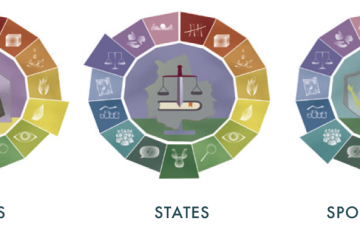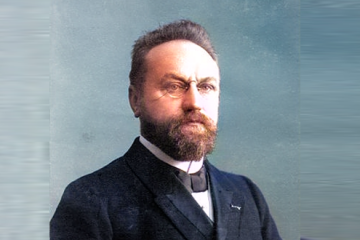For Easter Monday, here is a reflection on a poem which I was sent by my supervisor recently: ‘Suddenly’ by the twentieth-century Welsh poet and Anglican priest, R. S. Thomas.
As I had always known
he would come, unannounced,
remarkable merely for the absence
of clamour. So truth must appear
to the thinker; so, at a stage
of the experiment, the answer
must quietly emerge. I looked
at him, not with the eye
only, but with the whole
of my being, overflowing with
him as a chalice would
with the sea. Yet was he
no more there than before,
his area occupied
by the unhaloed presences.
You could put your hand
in him without consciousness
of his wounds. The gamblers
at the foot of the unnoticed
cross went on with
their dicing; yet the invisible
garment for which they played
was no longer at stake, but worn
by him in this risen existence.
When you’ve read this once through for its meaning, read it again, more slowly, thinking through what Thomas is saying about Christ. What part, or parts, of the Easter narrative is he illuminating in this short poem? Does any particular phrase or image resonate with what you have been thinking, singing, or talking about with others over this Easter period?
The poem both models and invites this kind of contemplative engagement: ‘I looked at him, not with the eye only, but with the whole of my being’. Not unusually for Thomas, some of it is dense and obscure, difficult to pick apart. But what caught my eye particularly was the academic simile in the second sentence – ‘So truth must appear to the thinker; so, at a stage of the experiment, the answer must quietly emerge.’
As a way of expressing the experience of beholding the crucified and risen Christ, this is, to say the least, unusual. Contemplation and analytical thinking merge into one gaze: Christ reveals himself to the speaker like the quietly climactic resolution of a train of thought, like the moment of apprehension and integration which we as academics experience only from time to time. This moment of comprehension – of ‘something understood’ – expands steadily, as the speaker looks, into the experience of ‘overflowing with him as a chalice would with the sea’.
It’s a more positive, or at least more open, metaphorical use of scientific experiment and deductive thinking than can be seen in another poem by Thomas, ‘Raptor’, which associates them with ‘making God small’. In ‘Suddenly’, they offer us a way into contemplation of Christ which is not surface-level, but embraces him with the whole self.
Layers of reality overlap dizzyingly in the last lines of the poem: Christ is at once on the cross and risen from the dead, his garment at once diced over by the soldiers and worn by him in triumph. Thomas deliberately presents us with a mystery. It invites meditation; it invites us to practise integrated thought – following Christ as he reveals himself to us, entering into the deep sea of him, looking not just with the eye but with the whole of our being.
For further reflection, contemplatively consider Roger Wagner’s ‘The Flowering Tree’, a stained glass window at the church of St Mary the Virgin, Iffley – another example of a portrayal of the crucified Christ with layers of reality represented.
- Vision and revision: listening to T.S. Eliot - August 19, 2024
- A Reformational perspective on manuscript studies? - March 26, 2024
- ‘Men of ability’ and the incarnate Christ - January 29, 2024


